How to Start a Translation Business Online: A Step-by-Step Guide
International business speaks English.
International customers? Not so much.
That’s why, in the era of unstoppable globalization, the potential for operating a translation business is unparalleled.
How to start a translation business?
That’s exactly what this article will teach you.
Pro tip: Before diving into the translation market, make sure your team is armed with a reliable translation management system, like Centus. With its help, you can streamline your translation processes, thereby gaining a competitive advantage. Learn more.
Translation industry trends and statistics
Before starting an online translation business, it is crucial to understand the current trends and statistics in the translation industry.
While the demand for localization services has rocketed in 2020, we can expect even more drastic change in 2023.
 Source: Technavio
Source: Technavio
According to a report by Technavio, the global translation market is expected to grow at a CAGR of 6.99% in the 2021-2026 period.
The report highlights that the increasing demand for localization services is one of the main factors driving the growth of the business translation services market.
A recent study puts in perspective the languages with the highest translation demand. The table below summarizes the research findings and displays languages with the highest potential for online sales.
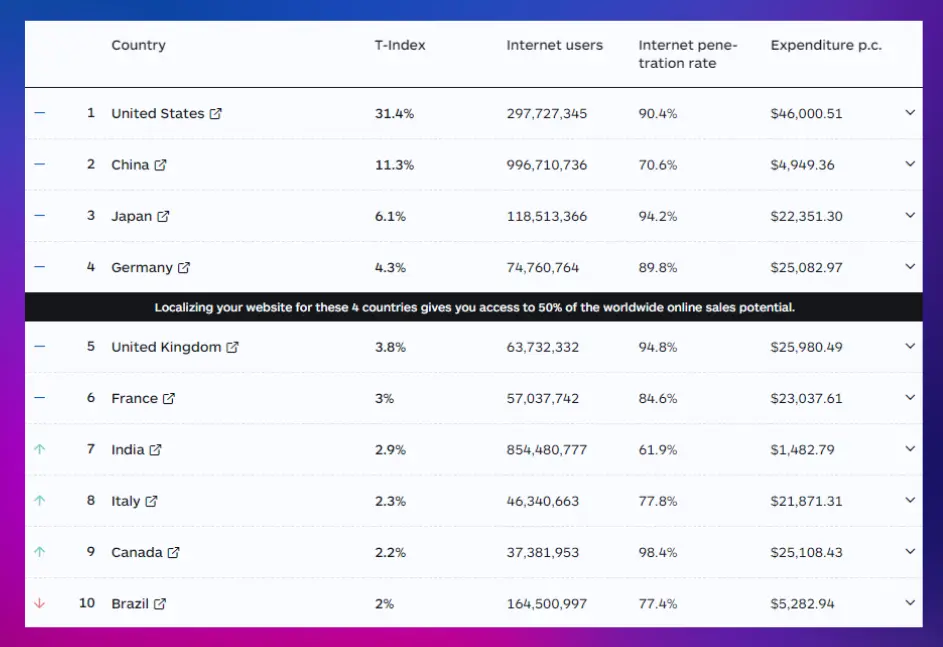 Source: Imminent
Source: Imminent
The defining trend of the translation industry in 2023 is AI. The use of AI-powered translation tools has made translation revolutionarily accessible and affordable. Nevertheless, AI-enabled tools cannot replace human translators yet, as they lack the ability to understand context and cultural nuances.
Human translators will continue to play a crucial role in the translation companies in the years to come. However, AI developments are likely to drastically diminish that role. After all, it’s not for nothing that the AI market is expected to reach a whopping $1.4 trillion by 2029.
Keep reading to learn how to start a successful translation agency.
How to start a translation business in 10 steps
Starting an online translation business is a laborious process detailed in the ten steps below.
Step 1: Educate yourself
If you are a translator looking to start a translation agency, prepare to wear multiple hats. You will need to complete a lot of work yourself and oversee the work of others. Therefore, it’s essential to develop the following business skills:
- accounting and financial management
- marketing and sales
- communication and customer service
- data analysis
- leadership
- project management
- strategic planning
- decision making
- time management
On the other hand, if you are an entrepreneur looking to start a translation agency, it is important to get trained in the specifics of the translation industry:
- the most and the least profitable language pairs
- calculation of document translation cost
- post-translation support
- editing certification
- ISO certification
- manuscript formatting
- translation of visual assets
- minimum charges
- the turnaround time
- rush fees
Use reputable sources like Stanford online courses to bridge your knowledge gaps and develop the business skills you lack. Also, make sure to explore translation blogs to get a better grasp of the industry.
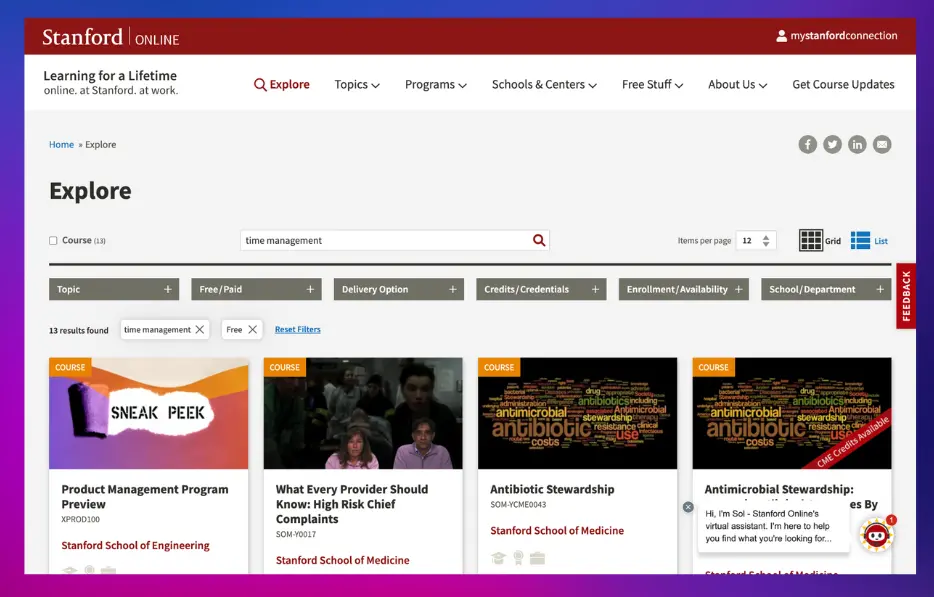 Source: Stanford
Source: Stanford
Step 2: Conduct research and select a niche
Doing market research and selecting a niche involves identifying your target market and determining the demand for business translation services in that market. You can use online tools, such as Google Trends, to determine the popularity of specific languages and keywords related to translation.
 Source: Google Trends
Source: Google Trends
Additionally, you can use platforms like Upwork, Fiverr, and Freelancer to see what types of translation services are in demand.
Selecting a niche market allows you to specialize in a specific type of translation service, such as legal translation, medical translation, or technical translations. In fact, some niches are more lucrative than others — one more thing to consider.
Specializing in one niche market can help you stand out from competitors and attract clients who are looking for specialized business translation services.
Step 3: Develop a business plan
A translation business plan is a crucial document that outlines your goals, strategies, and financial projections. Creating a business plan is as necessary as planning your trip before you go on it.
Here are elements of a translation business plan:
- Executive summary: This section provides a brief overview of the business plan, including the business's mission statement, products or services offered, target market, and financial goals.
- Market analysis: This section discusses the industry, target market, competition, and customer profiles. It should provide information on the potential customers, their needs and preferences, and how the business intends to meet those needs.
- Service offering: This section covers the products or services, including their delivery and unique selling points.
- Marketing and sales strategy: This section outlines the business's approach to promoting and selling its products or services. It includes details on pricing, distribution, advertising, and promotions.
- Financial projections: This section includes a financial plan, including projected income statements, balance sheets, and cash flow statements. It should also include a break-even analysis and any funding requirements.
- Goals and objectives: This section outlines the business' short-term and long-term goals and objectives. It should be specific, measurable, achievable, relevant, and time-bound.
Overall, creating a business plan is a critical step in starting or expanding a business. The Small Business Administration provides useful resources and templates to guide entrepreneurs in creating a comprehensive business plan. Make sure to take advantage of their useful resources when building your translation business plan.
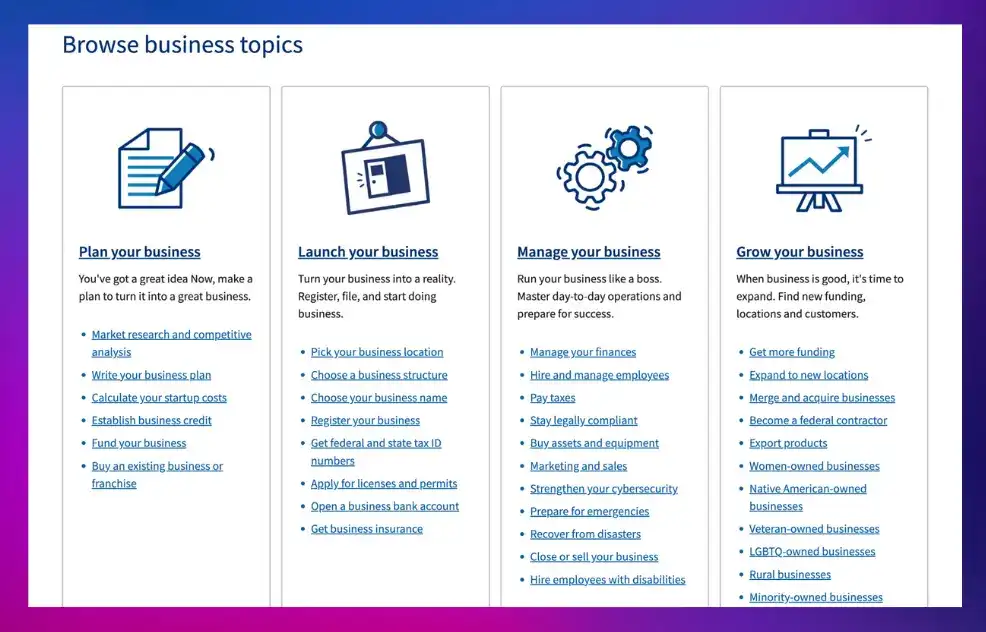 Source: SBA
Source: SBA
Step 4: Create a pricing
One of the most crucial aspects of forming business translation services is determining how much to charge clients. When creating a pricing model, it is important to consider various factors, such as the complexity of the project, the language pair, and the turnaround time. It is also essential to understand the value that your business translation services offer to clients and price accordingly.
Another critical factor to consider is how much to pay translators. Offering competitive pay rates is important in attracting and retaining high-quality translators. As a translation agency owner, balance fair pay rates for translators with profitability for the business.
It is also useful to know the average translation prices by country. Translation prices can vary significantly depending on the location, language pair, and type of content. For instance, according to a study by Common Sense Advisory (CSA), the average price per word for translation in the United States is $0.23, while in India, it is $0.07. Similarly, the average price per hour for translation in the United States is $62, while in India, it is $19.
Learn more about the cost of translation and its calculation here.
Pro tip: Make sure to use the translation rates calculator that takes a language pair and field of expertise into consideration before giving you both hourly and per-word rates.
You could also use other sources like Translated to calculate the price for your content translation depending on the language pair.
 Source: Translated
Source: Translated
Step 5: Create a service agreement
A service agreement is a legally binding contract that outlines the expectations, responsibilities, and terms of service between a translation company and its clients. It is an essential document that helps protect both the agency and the client in case of any disputes or misunderstandings.
Your translation services business services agreement should include:
- The scope of services: It outlines the specific services that the translation agencies provide to the client. The scope of services can include the languages to be translated, the types of content to be translated, and the turnaround time for projects.
- The payment terms: This section draws the terms and conditions related to payment, including the payment amount, payment method, and payment due date.
- The confidentiality terms: It describes the expectations of confidentiality and privacy related to the client's documents or any other sensitive information exchanged between your company and the client.
- The intellectual property rights section: This part of the document specifies the ownership and usage rights of the translated content. This can include information regarding copyright laws, trademark laws, and other intellectual property laws.
- The termination clause: In this part, outline the conditions under which the contract can be terminated by either party and any penalties or consequences that may result from it.
Having a service agreement can help establish a professional and reliable relationship between you and the client, which is essential for building a successful translation company.
Step 6: Put yourself on the map
To get your translation services business off the ground, you need to put yourself on the map. This means creating a strong brand, building a website, and generating leads through other online platforms like social media and advertising. Here are some tips to help you put yourself on the map:
- Develop a brand identity: Your branding is the face of your business. It is what makes your translation business recognizable and distinguishes it from others. Hire a designer to develop a logo and a color scheme. Think of a tagline that reflects your brand's message and mission.
- Create a website: A website is an excellent platform to showcase your services, portfolio, and contact information. In fact, you can create it all by yourself. Try these code-free platforms where people can easily create websites with customizable templates: Wix, Squarespace, and WordPress.
 Source: TheBlockEditor
Source: TheBlockEditor - Leverage lead-generation platforms: In addition to your website, you can also generate leads by utilizing other platforms. For example, you can list your business on translation agency directories, such as Proz and TranslatorsCafe. You can also create a profile on freelance platforms, such as Upwork and Fiverr.
- Advertise your website: Another way to generate leads is through online advertising. Platforms like Google AdWords and Facebook Ads are excellent options for targeting potential clients.
- Establish social media presence: Social media is an excellent way to promote your brand and connect with potential clients. To maintain a consistent message across multiple social media platforms, hire a social media manager. Make sure to regularly update your social media accounts to reflect changes in your business, services, and portfolio
Step 7: Hire translators
When hiring translators, you have two options: in-house or freelancers. Consider hiring freelancers at the start-up stage to keep down the expenses. You can start building an in-house team when there is a bigger workload.
There are many platforms where you can find freelance translators: Upwork, Freelancer, and Fiverr.
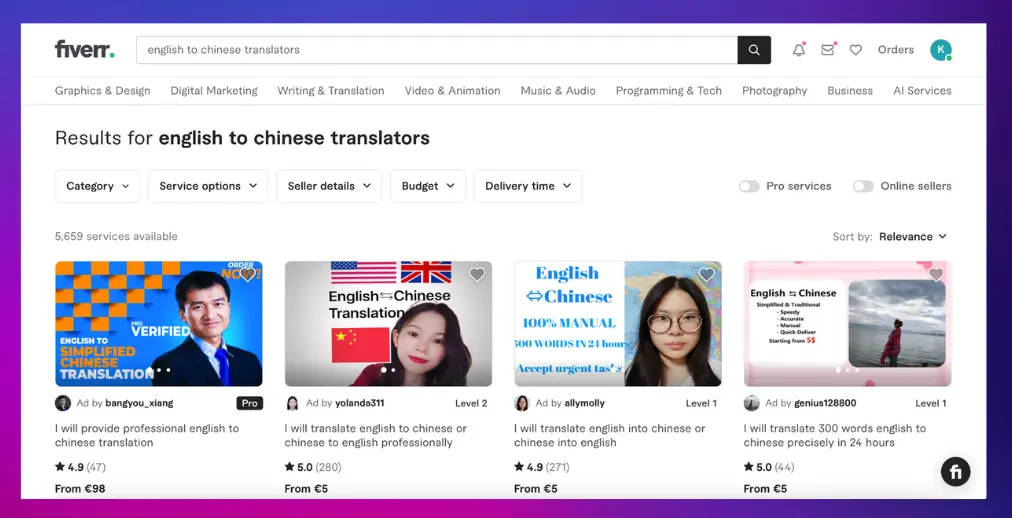 Source: Fiverr
Source: Fiverr
LinkedIn is also an excellent platform for finding both freelance and full-time translators, especially for more specialized fields.
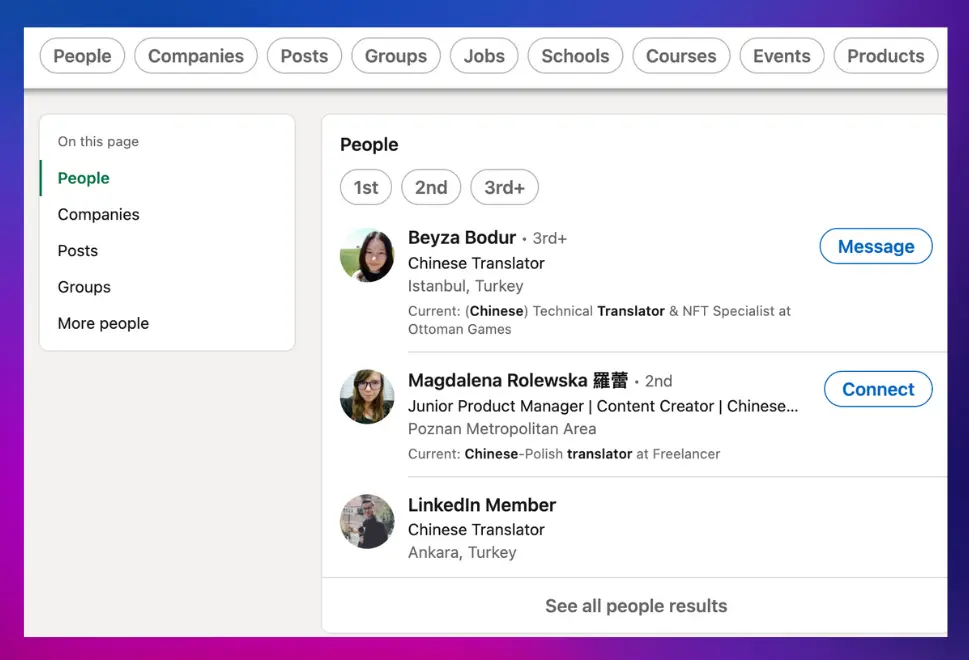 Source: LinkedIn
Source: LinkedIn
Step 8: Implement smart tools
Implementing smart translation tools can help streamline your translation services business processes, improve translation quality, and reduce turnaround times. Look into these examples:
- Translation memory tools: SDL Trados, Wordfast
- Machine translation tools: Google Translate, DeepL, Microsoft Translator
- Quality assurance tools: Xbench, QA Distiller, Verifika
Pro tip: To streamline your translation process, use Centus, a cloud-based translation management system that offers a range of features such as translation memory, terminology management, and project management. Learn more.
Step 9: Register your business
Before you start operating your translation services business, ensure legal compliance. The easiest way to navigate the legal requirements is to hire legal professionals. They can help you obtain a business license, open a business bank account, get business insurance, draft legal documents and agreements, file taxes, and much more.
Step 10: Manage your profits
Do not take this advice for granted — re-invest! While it's tempting to spend all your profits on personal needs, it's important to re-invest in your business to ensure its growth and sustainability.
Reinvesting your profits can take many forms, including marketing and advertising, hiring additional staff, and upgrading your translation tools and technology. By reinvesting in your translation services business, you can continue to improve your services, attract new clients, and ultimately increase your profits in the long run.
Get the week's best content!
By subscribing, you are agreeing to have your personal information managed in accordance with the terms of Centus Privacy Policy ->
Keep learning
13 min. read
17 Best Websites to Find Online Translation Jobs
7 min. read
Localization Specialist Role and How to Become One
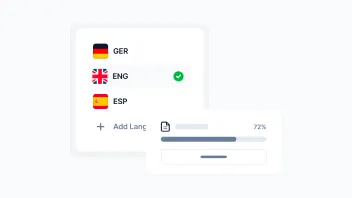
9 min. read
Business Translation Explained with Examples
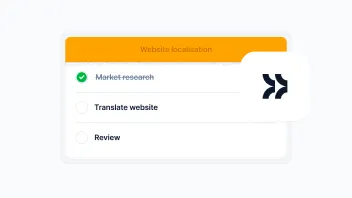
14 min. read
Website Localization: A Beginner’s Guide
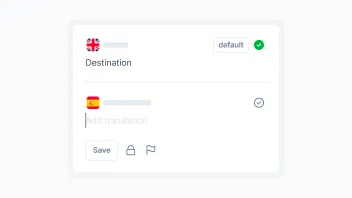
6 min. read
How to Organize Content Translation Process
18 min. read